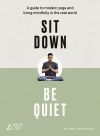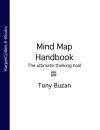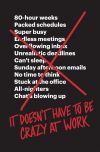Правообладателям!
Представленный фрагмент книги размещен по согласованию с распространителем легального контента ООО "ЛитРес" (не более 20% исходного текста). Если вы считаете, что размещение материала нарушает ваши или чьи-либо права, то сообщите нам об этом.Читателям!
Оплатили, но не знаете что делать дальше?
Текст бизнес-книги "Mind Time: How ten mindful minutes can enhance your work, health and happiness"
Автор книги: Dr Megan
Раздел: Жанр неизвестен
Текущая страница: 1 (всего у книги 1 страниц)

Copyright
Thorsons
An imprint of HarperCollinsPublishers
1 London Bridge Street
London SE1 9GF
www.harpercollins.co.uk
This edition published by Thorsons 2018
FIRST EDITION
Text © Michael Chaskalson and Megan Reitz 2018
Cover layout design © HarperCollinsPublishers Ltd 2018
A catalogue record of this book is available from the British Library
Michael Chaskalson and Megan Reitz assert the moral right to be identified as the authors of this work
All rights reserved under International and Pan-American Copyright Conventions. By payment of the required fees, you have been granted the nonexclusive, non-transferable right to access and read the text of this e-book on screen. No part of this text may be reproduced, transmitted, downloaded, decompiled, reverse engineered, or stored in or introduced into any information storage retrieval system, in any form or by any means, whether electronic or mechanical, now known or hereinafter invented, without the express written permission of HarperCollins e-books.
Find out about HarperCollins and the environment at
www.harpercollins.co.uk/green
Source ISBN: 9780008252809
Ebook Edition © March 2018 ISBN: 9780008252816
Version: 2018-01-12
Dedication
Michael
For Annette –
and for Ellie, Chloe, Ollie and Scarlett
Megan
For Steve, Mia and Lottie –
and John, Rachel and Doug Goodge
AIM
Allowing
Inquiry
Meta-awareness
Contents
Cover
Title Page
Copyright
Dedication
AIM
Introduction
Chapter 1: Why AIM?
Chapter 2: Learning to AIM
Chapter 3: AIM for Better Relationships
Chapter 4: AIM for Happiness
Chapter 5: AIM for Effective Work
Chapter 6: AIM for Better Health
Chapter 7: AIM for Better Work–Life Balance
Chapter 8: AIMing When Times Are Tough
The Beginning
About Our Research
About the Authors
Acknowledgements
Further Resources
References
Index of Searchable Terms
About the Publisher
Introduction
Your mind is extraordinary. Your mind. The mind that, right now, sees black marks on white paper and effortlessly turns them into bundles of meaning. The same mind that sees the word ‘sunset’ and fluently converts it into an inner vision of colours and shades. Without even trying.
How extraordinary. How miraculous.
To perform its amazing feats, your mind has an information-processing capacity greater than the combined power of all the computers, routers and Internet connections on Earth. Did you know, for example, that a tiny piece of your brain, the size of a grain of sand, contains 100,000 neurons and 1 billion synapses all communicating with each other.1 The brain is the mind’s supercomputer. It can connect 100 trillion bits of information.
So with this amazing capacity available to us, how do we use our minds?
The simple answer is, not as well as we might. For a start, about half the time we are awake we are thinking about something other than what is going on at the time.2 And we keep trying to multitask – ordering a pizza while walking the dog and Skyping a cousin in Australia. Recent research, however, shows multitasking significantly reduces our overall performance.3
Then there are all the things our minds do on autopilot. Do you wake up in the morning and reach for your phone, blearily checking your emails while still lying in bed? Do you sit in traffic on your way to work scowling when someone beeps their horn, without even considering that they might be trying to tell you something useful?
The fact is that we are only aware of a tiny fraction of what we are thinking, feeling and sensing – so we’re barely conscious of how and why we behave the way we do. It’s as if we have a large, elegant, state-of-the-art ocean-going cruise liner at our command and all we use it for is chugging about the harbour.
The problem is that although we have all that enormous potential at our disposal, our minds don’t come with an instruction manual. As miraculous as they are, we don’t know how to use them to anything like their full capacity. All we get is some rudimentary guidance.
We’ve all been educated to some extent. We’ve learned to do calculations and construct sentences; we’ve maybe learned history, geography, science, technology, languages or commerce. We can cook and shop, work the Internet and drive a car. We can do our jobs. We might even have mastered some of these to a very high level. But it’s not the same. We still don’t use or direct our minds effectively. And that affects the way we relate to others, the way we feel, the way we think and the way we experience the world around us.
Most of the time our minds just run on automatic and we’re barely aware that they’re doing that. This keeps us confined in the narrow space of our habits. Mentally, emotionally and in our behaviours, we keep doing what we’ve always done – and we keep getting what we’ve always got. Sometimes we manage to break out into new ways of doing things. But often, with a sad predictability, these new resolutions and good intentions don’t last and we flip back to automatic again.
That’s the bad news. The good news is that we can do so much better, and it’s not that hard. We just need to know how to use our minds more effectively.
This book sets out to help you get your mind out of automatic more often. The training programmes we’ve led throughout the world and our research tell us that it’s possible for us all to do this – and when we do so life goes much better. We become more resilient, we have stronger relationships and we’re better able to manage unexpected events. We feel more awake, more alive and more creative. And that’s because we are!
Everything that happens as we go about our day shapes and changes our minds in subtle (or less subtle) ways. A difficult telephone call leaves us feeling a bit low; a cheerful remark leaves us feeling more buoyant. The mind is a kind of liquid lens. It’s always moving and changing, and as it shifts the world that it perceives also shifts. There are still houses, streets and trees out there, but the quality of our experience alters.
The important point is this. You can leave that process to chance, letting your mind be randomly shaped and changed by passing events, or you can get more involved in the process and help to direct it. There are simple things you can do every day to help you shape your mind so that whatever life brings you’re better able to respond creatively.
And the even better news is that it only takes 10 minutes a day. Yes, just 10 … short … minutes. We call that Mind Time, and we all need it.
If you can set aside 10 minutes each day to engage in a few simple practices,and if you really follow the advice we’ve given about doing them, then in a few months things should get better. That’s our promise to you. But you have to commit the 10 minutes of your day. No one else can do that for you.
The fact that you picked up this book suggests that you are looking for something to make your life better. The question is: are you ready to embark on a fascinating and – literally – mind-expanding journey? We hope so. The upside is huge.
We will introduce you to your own mind so that you can begin to see more clearly how it works. We’ll show you some of the levers you can pull so that you can begin to shape your mind more as you want it. We’ll teach you how to stand back a little – just a tiny bit – so that you can see what your mind is up to more often, and that will allow you to make more powerful choices about where you want it to go.
In the first chapter, we’ll lay out the problem more fully and suggest some solutions. We’ll discuss the research we conducted and introduce some simple practices that you can do every day. These will help you develop three key capacities, which we collectively refer to as ‘AIM’:
1 Allowing – an attitude of kindness and acceptance.
2 Inquiry – a curiosity about your present-moment experience.
3 Meta-awareness – the ability to observe your thoughts, feelings, sensations and impulses as they are happening and see them as temporary and not ‘facts’.
AIM will help you to become more alive and aware of yourself, of others and of the world around you. And that greater awareness gives you more choices. That’s what AIM is all about – choiceful response rather than choiceless reaction.
The elements of AIM are mapped out in Chapter 1. Allowing and Inquiry are more easily understood – though the devil is in the practice. Meta-awareness is more obviously challenging. ‘Meta’ means ‘beyond’ or ‘at a higher level’. So we are referring to a specific type of awareness. It describes a particular way of observing and being able to describe what is happening in the ever-changing stream of your experience from moment to moment. This is explained more fully in Chapter 1.
Chapter 2, ‘Learning to AIM’, discusses the Mind Time practices that will help you to shape your mind and shows you how to access the audio recordings, which guide you through these practices.
In many ways Chapter 2 is the heart of the book. When you’ve read it, we encourage you to begin straight away with the Mind Time practices. And keep doing them. The benefits on offer take time to emerge.
In the chapters after that we’ll look at how you can apply some of the skills you’ll learn to key parts of your life.
We’ll look at:
AIM for better relationships (Chapter 3)
AIM for happiness (Chapter 4)
AIM for effective working (Chapter 5)
AIM for better health (Chapter 6)
AIM for work–life balance (Chapter 7)
AIMing when times are tough (Chapter 8)
Then we round things up and leave you with some final inspiration.
Our minds are the key to unlocking the life we wish to lead. The state of our minds not only directly affects our happiness, learning, creativity and performance, it affects the happiness, learning, creativity and performance of those around us: our family, friends and colleagues. The state of our mind determines our experience of life and deeply influences the experiences those around us have.
Isn’t it time we learned to shape our minds – not be shaped by them? We think so, and this book will show you how.
Michael Chaskalson and Megan Reitz
June 2017
Внимание! Это ознакомительный фрагмент книги.
Если начало книги вам понравилось, то полную версию можно приобрести у нашего партнёра - распространителя легального контента ООО "ЛитРес".Правообладателям!
Представленный фрагмент книги размещен по согласованию с распространителем легального контента ООО "ЛитРес" (не более 20% исходного текста). Если вы считаете, что размещение материала нарушает ваши или чьи-либо права, то сообщите нам об этом.Читателям!
Оплатили, но не знаете что делать дальше?



![Книга Search Inside Yourself: Increase Productivity, Creativity and Happiness [ePub edition] автора Jennie Miller](http://biznes-knigi.com/books_files/covers/thumbs_100/search-inside-yourself-increase-productivity-creativity-and-happiness-epub-edition-11788.jpg)



